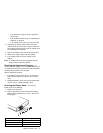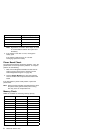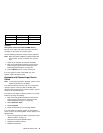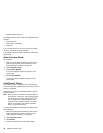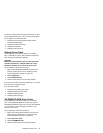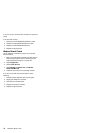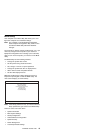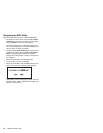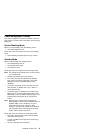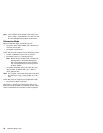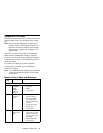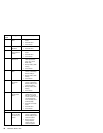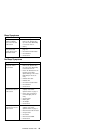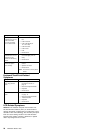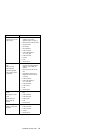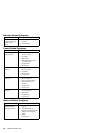
Power Management Features
Two power management modes are available in the com-
puter system to reduce power consumption and to prolong
battery life.
Screen Blanking Mode
When in screen blanking mode, the following occurs:
The LCD backlight turns off.
Events that cause the computer to enter screen blanking
mode:
Screen blanking requested by the Fn key (Fn+F3).
Standby Mode
When in standby mode, the following occurs:
The LCD backlight turns off.
The hard disk motor stops.
CPU stops the clock.
Events that cause the computer to enter standby mode:
Note: The standby mode indicator turns on when system
is in standby mode.
Standby requested by the Fn key (Fn+F4).
The LCD is closed (if the "Will not Enter Standby
Even if the Lid is Closed" parameter in the Power
Management menu of the BIOS Utility is set to
"Enabled").
The system (keyboard, mouse, hard disk drive, par-
allel connector, or diskette drive, etc.) is idle for a
certain period of time.
The battery power is critically-low. The "Sleep upon
Battery-low" in the Power Management menu of the
BIOS Utility is set to "Enabled". Sleep Manager is not
installed and the hibernation file is not present or
invalid.
Note: Before entering standby mode, if "Battery-low
Warning Beep" in the Power Management menu of
the BIOS Utility is set to "Enabled", four short
beeps will be issued every minute for three
minutes. If a powered AC Adapter is not attached,
then the beeps will be continuously issued every
minute until the system shuts down.
Events that cause the computer to exit standby mode:
The LCD is opened (if the system entered standby
mode from closing the lid).
A serial or PCMCIA device signals the modem ring
indicator (RI).
Any key or pointing device operation.
ThinkPad i Series 1400
15



